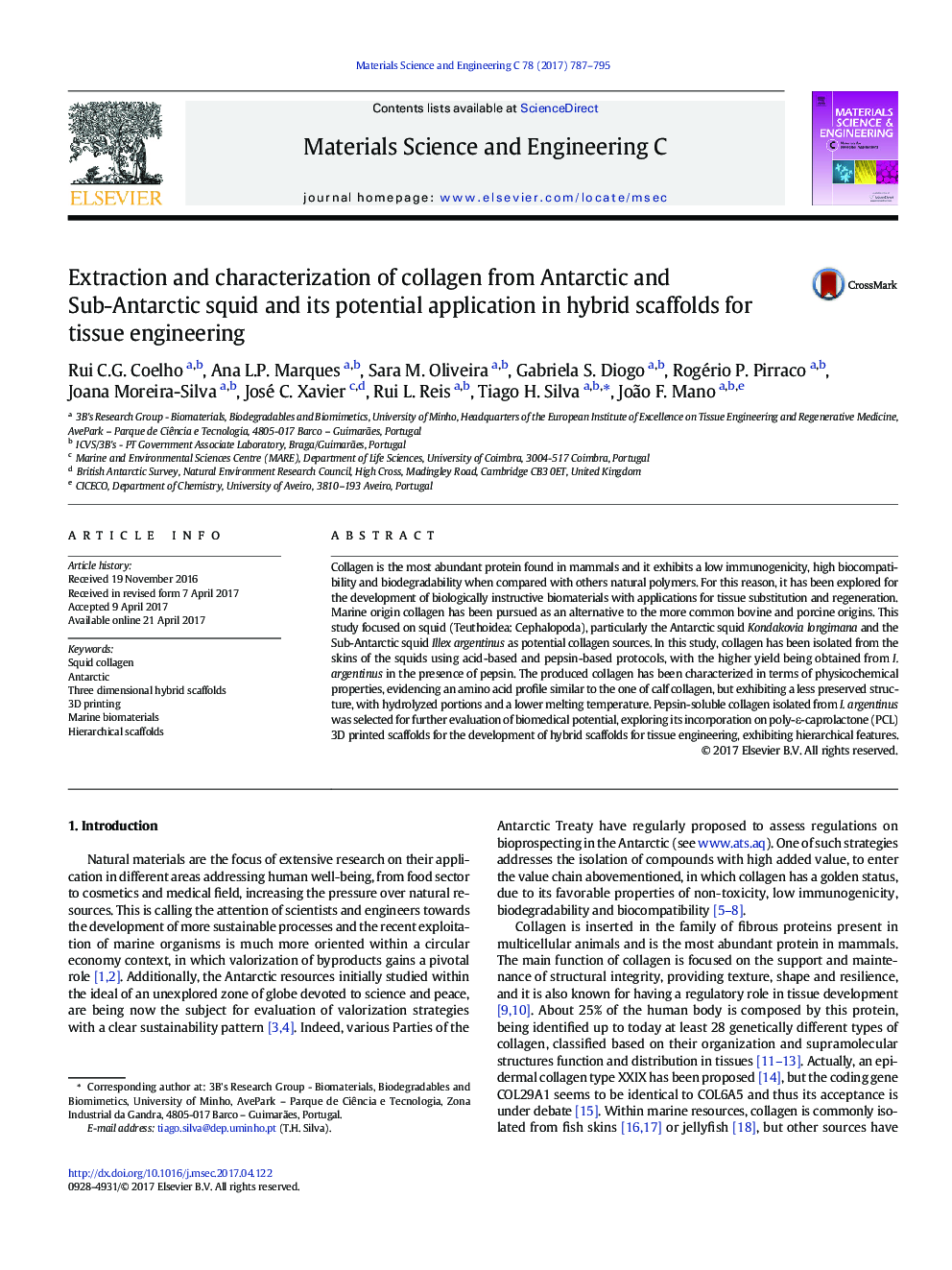| Article ID | Journal | Published Year | Pages | File Type |
|---|---|---|---|---|
| 5434474 | Materials Science and Engineering: C | 2017 | 9 Pages |
â¢Collagen has been isolated for the first time from the Antarctic squid Kondakovia longimana.â¢Collagen from K. longimana was more sensitive to extraction than the one from the Sub-Antarctic squid Illex argentinus.â¢Pepsin-soluble collagen from I. argentinus was incorporated on 3D printed PCL structures, developing hybrid scaffolds.
Collagen is the most abundant protein found in mammals and it exhibits a low immunogenicity, high biocompatibility and biodegradability when compared with others natural polymers. For this reason, it has been explored for the development of biologically instructive biomaterials with applications for tissue substitution and regeneration. Marine origin collagen has been pursued as an alternative to the more common bovine and porcine origins. This study focused on squid (Teuthoidea: Cephalopoda), particularly the Antarctic squid Kondakovia longimana and the Sub-Antarctic squid Illex argentinus as potential collagen sources. In this study, collagen has been isolated from the skins of the squids using acid-based and pepsin-based protocols, with the higher yield being obtained from I. argentinus in the presence of pepsin. The produced collagen has been characterized in terms of physicochemical properties, evidencing an amino acid profile similar to the one of calf collagen, but exhibiting a less preserved structure, with hydrolyzed portions and a lower melting temperature. Pepsin-soluble collagen isolated from I. argentinus was selected for further evaluation of biomedical potential, exploring its incorporation on poly-ε-caprolactone (PCL) 3D printed scaffolds for the development of hybrid scaffolds for tissue engineering, exhibiting hierarchical features.
